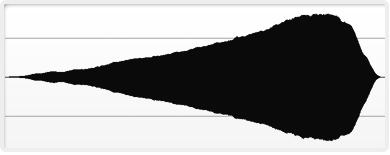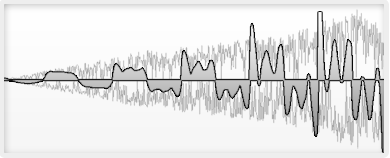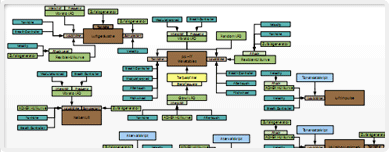Technology
During my bachelor thesis I developed an algorithm to rebuild the harmonic structure of different dynamic states for wind instruments. On this page you can find the attempt to explain this nerdy stuff.
I share this information with you because I think this could be an inspiring method for other musicians / sample library developers.
Before I started, I determined my requirements for the technology (out of my experience with other sample libraries):
- No Articulations / Keyswitches. This often enough has been done before by other developers. The technology has to provide an instrument that can be played as if it were a real thing. Also, ensure the realtime playability with Breath / Wind Controllers, because they are awesome.
- Keep the sample amount at a minimum. Not only to shorten the loading time and the memory footprint but also to make the recording process as efficient as possible.
- Provide a natural sound. Most libraries are over perfectly recorded and edited which eliminates the human factor.
So far so good. By combining Wavetables of multiple dynamic layers with noise recordings I managed to comply these conditions. This is how it works:

STEP 1: Record Crescendo Samples
Every semitone is recorded as a crescendo note in an acousticely dry environment using top-notch mikrophones.
STEP 2: Cut into 64 slices
The crescendo note is sliced into 64 pieces containing the full dynamic spectrum.
STEP 3: creating Wavetables
A custom designed algorith extracts the harmonic structure of these 64 slices and creates Wavetables that are phase-aligned for artifactless fading in realtime.
Step 4: Adding the noise recordings
The Wavetables are combined with customly recorded noise samples to eliminate the sterile character of the synthesis.
Step 5: Designing the modulation architecture
This is the most complex part. Over 180 KONTAKT modulators were used to create a realistic behaviour of the virtual instrument.Sound Examples
All these words and images are quite fancy, but what is the result? Listen yourself. Below you can hear a original recording of a clarinet and the artificial reproduction (including some common stumbling blocks I had to overcome to raise the suspense).
All sound files are 48kHz/24bit Wave files for best quality. If your browser supports HTML5 you should be able to play them. If not, you can still download them. Make sure you can control you speakers volume. These are crescendo notes and get loud at the end!
Original: Reference recording
This is an original reference recording of a clarinet crescendo note. Focus on the tonal change of the harmonic structure as the clarinet is played louder, since this is the thing we try to reproduce here:
Original Reference Recording.
[Download Wave File] (Right Click -> Save)
First attempt: Static wavetable
The first step is extracting the harmonic structure of the clarinet sound. We use one wavetable (from the loudest stage) and add a volume modulator. To create a more realistic comparison to the original note, some noise samples are added (just like Thaddäus does it).
Artificial crescendo with static wavetable.
[Download Wave File] (Right Click -> Save)
Yeah, you are right. It sounds terrible. Although it gets louder, there is no way a person living after 1974 would think it is a real instrument. So the next step is to create multiple wavetables from different dynamic states.
Second Attempt: Multiple Wavetables
64 different wavetables of different dynamic states are selected(like described above) and a crossfade between these states is applied. This is the result:
Artificial Crescendo with multiple wavetables.
[Download Wave File] (Right Click -> Save)
Well that's better. However you can hear a really nasty phasing effect when the wavetables are faded. The reason for this effect are subtle tuning differences between the wavetables which results in unlocked phases of harmonics (btw, this is exactly how a flanger works).
Final Result: Phaselocked Wavetables
So the last step is to phase lock these little buddies. This is done by a customly developed algorithm. The phasing effect is gone and we can hear a smooth crescendo note. You can compare it yourself to the original note.
Artificial Crescendo with multiple phaselocked wavetables.
[Download Wave File] (Right Click -> Save)
This technology is the foundation of all instruments (except Volker which was an early shot using AET). Of course it needs a lot more work to get a decent sounding and playable virtual instrument, but that's where scripting and modulators come in handy...
If you want to know more about it, feel free to contact me. Also if you you want to create such an instrument but won't dive into nerdworld, also contact me so we can talk about a cooperation. (eg. you provide the recordings and I do the rest.)

